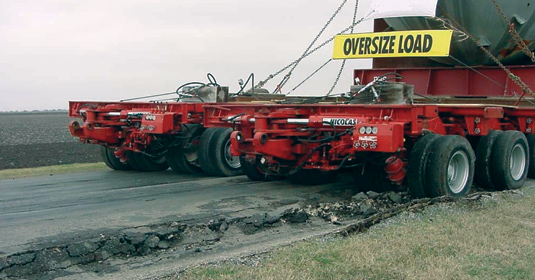The 82nd Texas Legislature required the Texas Department of Transportation (TxDOT) to conduct a study to evaluate increased pavement and bridge consumption by oversize and/or overweight (OS/OW) vehicles, including exempt OS/OW vehicles carrying loads such as agricultural products, solid waste or recycled materials, ready mix concrete and milk. The study, referred to as Rider 36, also required TxDOT to provide recommendations for permit fee and fee structure adjustments to the governor and the Legislative Budget Board by December 2012. TxDOT commissioned the Center for Transportation Research (CTR) at The University of Texas at Austin and the University of Texas at San Antonio to undertake this study.
Report highlights and recommendations include the following:
The study concluded that the state’s current OS/OW permit fee structure is inadequate to recover OS/OW truck-related infrastructure consumption costs.
The research team used permit and trip data and rigorous engineering analysis to quantify infrastructure consumption costs associated with each type of OS/OW truck, including those that state law currently exempts from permit requirements.
The research team proposed a model alternative fee structure that builds on the state’s online permitting system; links OS/OW permit fees to the cost of infrastructure consumption; and generates additional revenue to address OS/OW vehicle-related administrative and enforcement costs as well as the cost of maintaining and preserving the state’s transportation infrastructure.
The research recommended streamlining the number of permit types and reducing exempt truck classes.
The proposed model for an alternative fee structure uses vehicle miles travelled (VMT) and vehicle characteristics that exceed legal limits (i.e., weight, height, width, and length) to determine the permit fees. These proposed fees also include operational and safety cost components.
Adopting the research’s proposed model alternative fee structure could increase annual state OS/OW permit revenue to $521 million from $111 million collected in FY 2011, an increase of $410 million.
Applying the research’s proposed model fees to trucks exempt from permit requirements under current law – based on estimates of their numbers and adjusting for seasonal use and load types – could yield an additional $150 million in annual permit revenue.
The report includes the following chapters and can be viewed in full at: http://www.txdot.gov/inside-txdot/forms-publications/publications/key-publications.html.
Chapter 1: Report Structure and Overview
Chapter 2: Methodology and Recommendations for Pavement Consumption Analysis
Chapter 3: Bridge Consumption
Chapter 4: Cost Analysis
Chapter 5: Revenue Analysis
and Recommendations
















